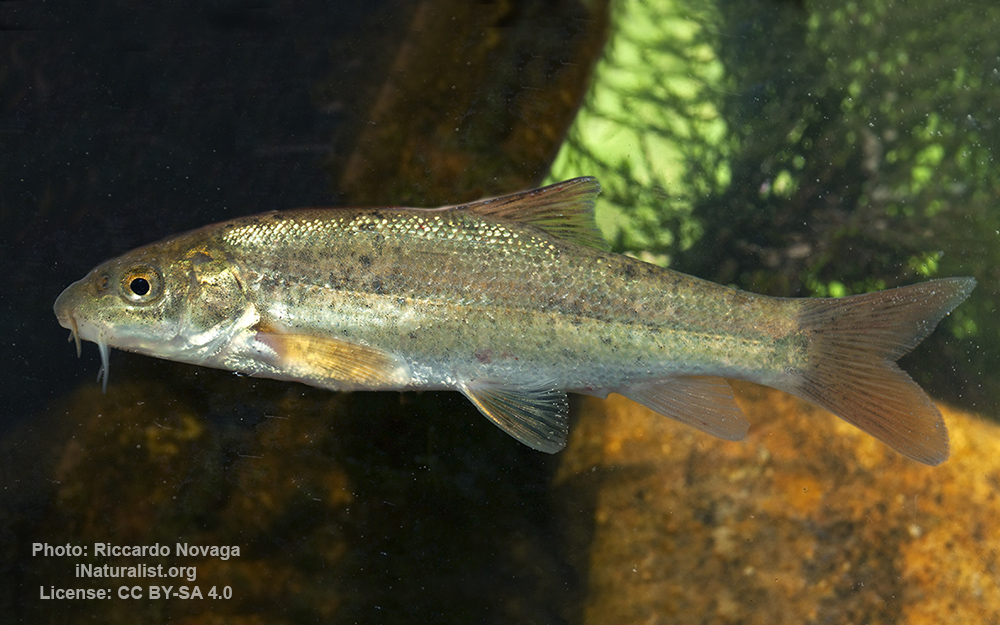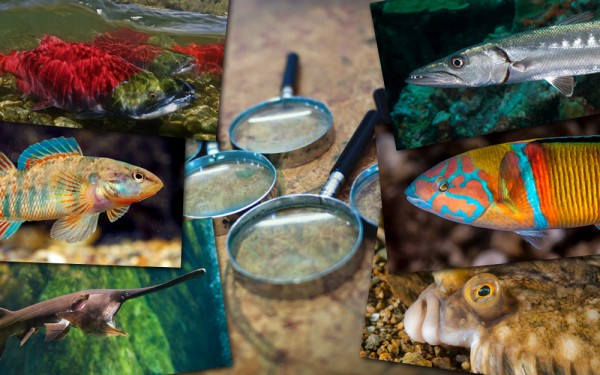Samnite barbel
(Barbus samniticus)

Image source: Riccardo Novaga | inaturalist.org
Classification
General data
Barbus samniticus is a freshwater bony fish belonging to the family Cyprinidae, endemic to southern Italy. The species was described in 2021.
This species is endemic to the Adriatic region of southern Italy, ranging from the Vomano River in the north to the Biferno River in the south.
It inhabits rivers and streams in mountainous and hilly areas, coexisting with species typical of these environments, such as the Italian roach (Rutilus rubilio), the Italian vairone (Telestes muticellus), and the Italian chub (Squalius squalus).
The general appearance of Barbus samniticus is very similar to Barbus tyberinus, to which its description is often compared. Only the main differences useful for identifying this species are highlighted here. The species Barbus fucini is also quite similar but does not coexist with B. samniticus within its range. Morphological features may sometimes be insufficient for reliable identification, requiring molecular taxonomy analysis in such cases.
B. samniticus has a taller body than both B. tyberinus and B. fucini. Compared to B. fucini, it has a smaller interocular distance. Compared to B. tyberinus and B. plebejus (introduced to central and southern Italy), it has visibly longer ventral, pectoral, and caudal fins. The caudal fin is more deeply forked and has a deeper central incision than in B. tyberinus. The dorsal fin has a straight or slightly concave rear edge.
The coloration is similar to that of B. tyberinus, with a grayish or brownish back, whitish belly, and numerous small dark spots on the back, sides, and dorsal, anal, and ventral fins. The spotting is more pronounced in individuals living in clear waters. The fins typically have orange hues, and the dorsal fin may appear gray but usually has reddish or orange reflections. This feature often facilitates species identification.
The maximum known size is 18.8 cm.










